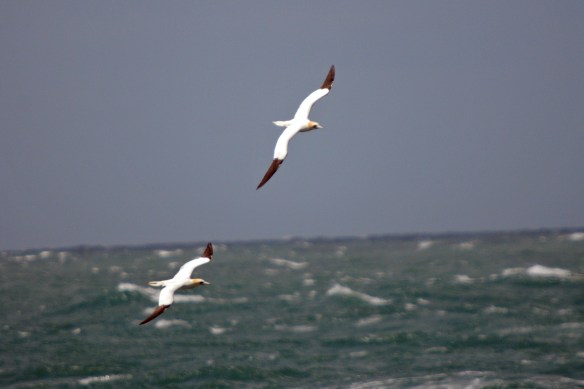 From The Guardian
From The Guardian
New research has identified that the world’s most widely used insecticides may be a key factor in the recent reduction in numbers of farmland birds across Europe.
This new research represents a significant escalation of the known dangers of insecticides and follows an assessment in June that warned that pervasive pollution by insecticides was now threatening all food production.
Some, neonicotinoid insecticides, are believed to seriously harm bees and other pollinating insects, and a two-year EU suspension on three of the poisons began at the end of 2013. But the suspected knock-on effects on other species had not been demonstrated until now.
This new research, published in Nature, has revealed data from the Netherlands showing that bird populations fell most sharply in those areas where neonicotinoid pollution was highest. Starlings, tree sparrows and swallows were among the most affected. At least 95% of neonicotinoids applied to crops ends up in the wider environment, killing the insects the birds rely on for food, particularly when raising chicks.
The researchers, led by Hans de Kroon, an ecologist at Radboud University, in the Netherlands, examined other possible reasons for the bird declines seen during the study period of 2003 to 2010, including intensification of farming. But high pollution by a neonicotinoid known as imidacloprid was by far the largest factor.
“It is very surprising and very disturbing,” de Kroon said. Water pollution levels of just 20 nanograms of neonicotinoid per litre led to a 30% fall in bird numbers over 10 years, but some water had contamination levels 50 times higher. “That is why it is so disturbing – there is an incredible amount of imidacloprid in the water,” he said. “And it is not likely these effects will be restricted to birds.”
De Kroon added: “All the other studies [on harm caused by neonicotinoids] build up from toxicology studies. But we approached this completely from the other end. We started with the bird population data and tried to explain the declines. Our study really makes the evidence complete that something is going on here. We can’t go on like this any more. It has to stop.”
David Goulson, a professor at the University of Sussex, who was not involved in the new studies, said the research was convincing and ruled out likely alternative causes of bird decline. “The simplest, most obvious, explanation is that highly toxic substances that kill insects lead to declines in things that eat insects.”
There was little reason to doubt that wildlife in the UK and other countries were not suffering similar harm, he said. “This work flags up the point that this isn’t just about bees, it is about everything. When hundreds or thousands of species of insect are being wiped out, it’s going to have impacts on bats, shrews, hedgehogs, you name it. It is pretty good evidence of wholesale damage to the environment.”
Goulson said that, unlike the Netherlands, the UK did not monitor neonicotinoid pollution and the EU ban would not remove the substances from the environment. “They are still being widely used, as the moratorium only applies to three neonicotinoids and some crops. There is still a lot of them going into the environment. The door is far from shut.”
A spokesman for Bayer CropScience, which makes the neonicotinoid that was examined in the study, disputed the findings. “It provides no substantiated evidence of the alleged indirect effects of imidacloprid on insectivorous birds. Bayer CropScience is working with the Dutch authorities and agricultural stakeholders to ensure the safe use of imidacloprid-containing crop protection products and to preserve the environment.” He added: “Neonicotinoids have gone through an extensive risk assessment which has shown that they are safe to the environment when used responsibly according to the label instructions.”
But de Kroon said new research, including his own, was showing that neonicotinoids posed an even greater threat than had been anticipated and new regulations had to take this into account. In 2012, MPs warned regulators appeared to be “turning a blind eye” to the harm caused by neonicotinoids. David Gibbons, head of the RSPB centre for conservation science, said: “This elegant and important study provides worrying evidence of negative impacts of neonicotinoid insecticides on birds. Monitoring of neonicotinoid pollution in UK soils and waterways is urgently required, as is research into the effects of these insecticides on wildlife.”
A spokesperson from the UK’s Defra said: “Pesticide use across Europe is tightly regulated to protect the environment and public health – [pesticides] are a safe, effective and economical means of managing crops. We continue to review evidence on neonicotinoids.”
As noted here, in Jersey, very few of these products have ever been used. However, their use outside of the Channel Islands will undoubtedly have a bearing on our wildlife too.
Read the abstract of the Nature study here

 By Cris Sellarés
By Cris Sellarés


























